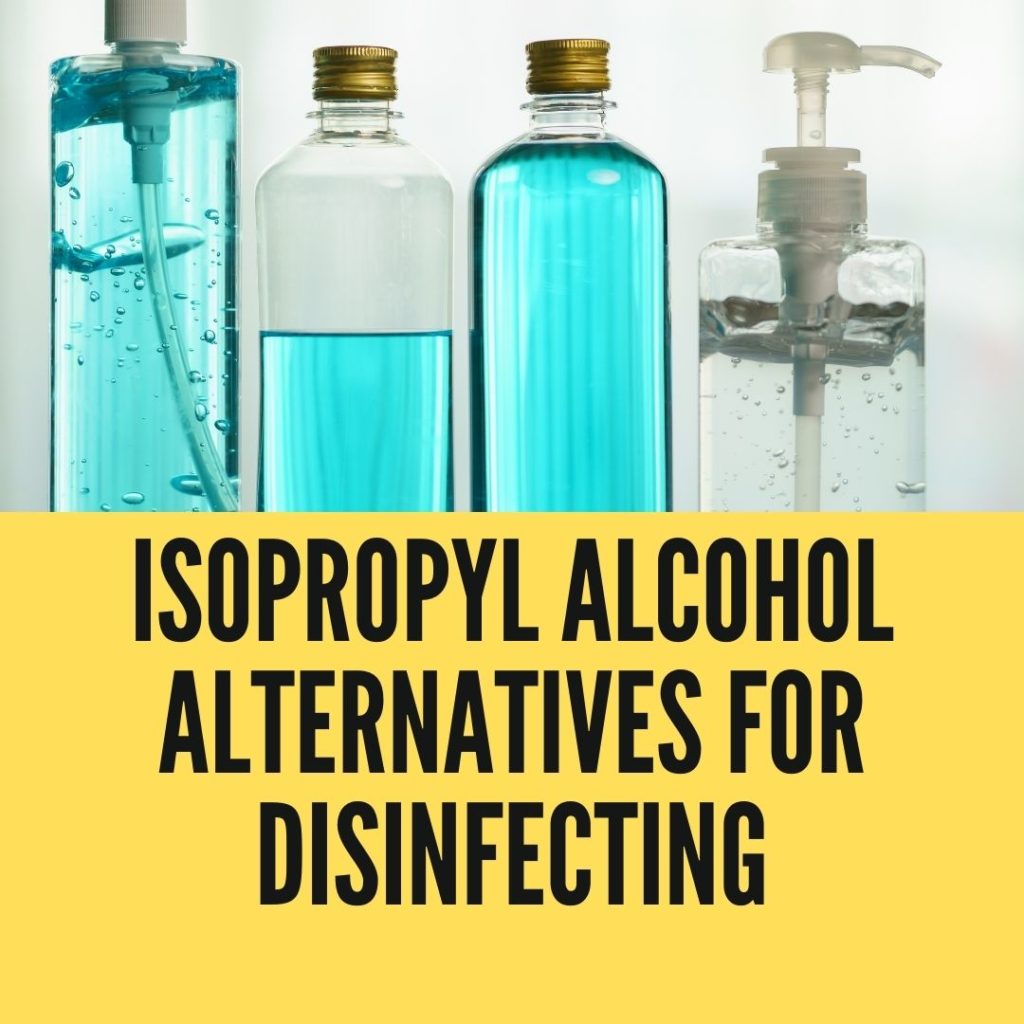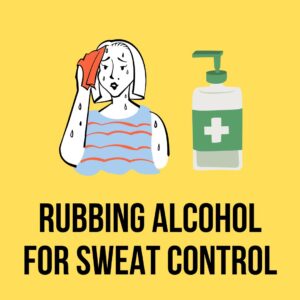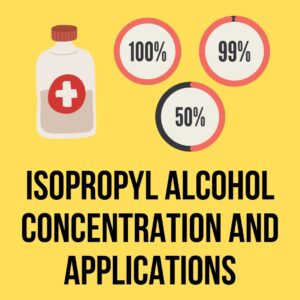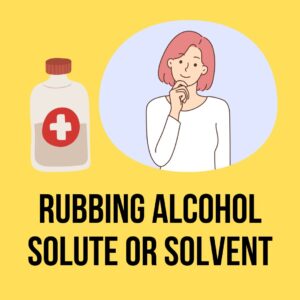Winter 2020 was double-trouble as far as viruses and illnesses were concerned.
Not only did we have to worry about COVID-19, but severe winter storms and the temperature drops only contributed to more people coming down with the common cold, flu, and more.
In response, several cities around the world underwent a second series of shutdowns.
During this time, isopropyl rubbing alcohol and hand sanitizer were selling out just as much as they had been in the Spring and Summer during the peak of the virus.
Without the much-needed tools that they needed to sanitize, many people chose to isolate themselves for protection.
So what are the best isopropyl alcohol alternatives? The best isopropyl alcohol alternatives are Ethyl Alcohol, Hydrogen Peroxide, Bleach, Chlorine, Soap, Lysol, and UV lights. Isopropyl Alcohol works through a process called denaturing. Most of the alternatives above function in much the same way.
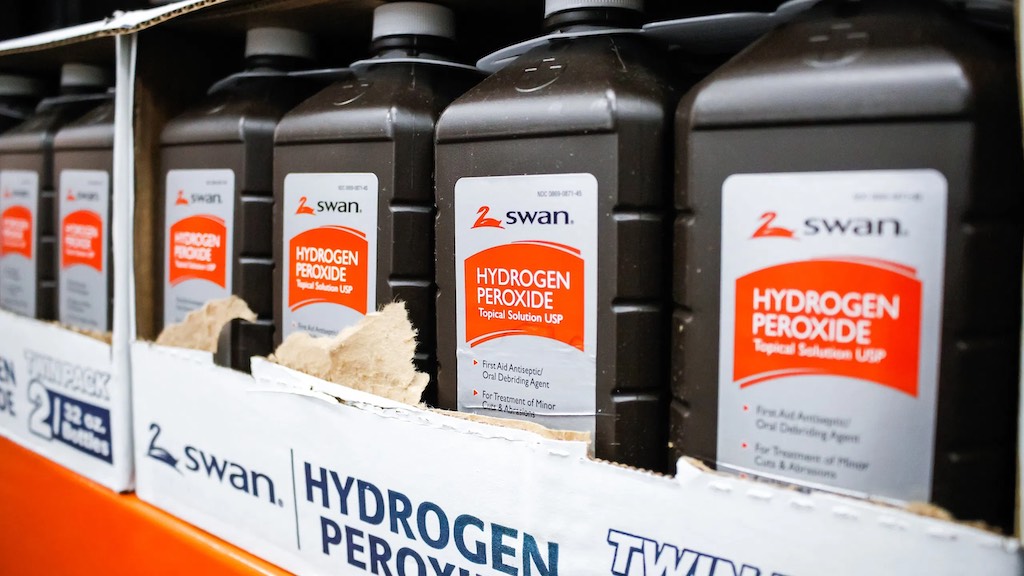
Although all of the rubbing alcohol alternatives on this list perform well as disinfectants, not all of them are designed to be used in the same conditions or on the same surfaces.
Below, we’ll discuss the science behind each isopropyl alcohol alternative to prove that all of these are efficient replacements.
Alternatives To Isopropyl Alcohol
Isopropyl alcohol can disinfect surfaces by killing germs We all knew that, though. What most people don’t know is how alcohol can kill germs and bacteria.
By understanding the mechanism of how alcohol kills germs, we can better identify other alternatives to isopropyl alcohol that do the same thing.
Alcohol works through a process called denaturing. In layman’s terms- it breaks the virus apart at its core so that it’s no longer able to survive.
It does this by breaking apart the Hydrogen bonds that hold the organisms together.
Finally, as the alcohol evaporates, so do the leftover Hydrogen bonds, leaving a perfectly clean and sanitized surface.
Most of the other alternatives mentioned in this article function in much the same way. They break down the germs’ molecular structure and effectively neutralize them. Now that you know how they work, let’s take a look at them!
1) Ethyl Alcohol
The most common alternative to isopropyl rubbing alcohol is ethyl alcohol (or ethanol). Most people know ethanol as a fuel additive in gasoline or as grain alcohol (moonshine). However, the FDA recently approved the use of ethyl alcohol as a sanitizing agent.
In almost all of the tests performed, ethanol works just as well as isopropyl alcohol when it comes to sanitizing.
It’s important to note that when using both forms of alcohol, they should be concentrated between 60% and 70% for sanitization when using both forms of alcohol.
If you use ethanol at a 90% concentration or stronger, it may evaporate before it has time to kill the germs.
Ethyl alcohol can usually be found at your local grocery store, purchased online, or in some cases- made at home (as a last-case scenario).
2) Hydrogen Peroxide
Hydrogen peroxide is another popular antiseptic that’s been used in the medical field since the 1920s.
Unlike isopropyl and ethyl alcohol, hydrogen peroxide doesn’t target hydrogen bonds. Instead, it works through a process called oxidation.
Are hydrogen peroxide and isopropyl alcohol the same? No, hydrogen peroxide and isopropyl alcohol are not the same. Hydrogen peroxide and isopropyl alcohol are not the same because hydrogen peroxide is not an alcohol. Hydrogen peroxide is actually an oxidizing agent, with 3% hydrogen peroxide dissolved in water.
It has very reactive oxygen molecules that have a tendency to “steal” any electrons from other atoms.
This means that H2O2 (the chemical notation for hydrogen peroxide) is a polar molecule in chemistry terms. Its positive charge means that it has a strong pull on electrons.
When the solution comes into contact with germs and bacteria, it immediately starts to break down the germs’ cell walls.
As the cell walls break down, the hydrogen peroxide’s oxygen molecules steal electrons from the germs’ molecules and effectively kill them!
Hydrogen peroxide can be used to clean both skin and hard surfaces and is probably the safest alternative to isopropyl rubbing alcohol.
3) Bleach
Bleach isn’t the best disinfectant for topical application since it can damage the skin and cause irritation.
However, it’s a great way to disinfect surfaces such as countertops, doorknobs, and other germ-carrying materials.
The way that bleach kills germs is a lot different than alcohol or hydrogen peroxide. Instead of breaking down the cellular structure of the germs, it targets the proteins of the germs.
Germs are living organisms made up of small proteins called amino acids.
When bleach is sprayed onto a surface, it quickly turns into hypochlorous acid which “unfolds” the germs’ amino acids and essentially cooks them until they’re no longer a threat.
Since it targets organic proteins, it’s not recommended for use on our skin (which is also made up of organic proteins).
4) Chlorine
Chlorine works the same way that bleach does and is actually very similar as far as molecular structure goes. The chemical term for chlorine is hypochlorous acid (which you might remember as bleach from above).
Chlorine is typically purchased in powder form or in pre-pressed tablets. These can be added to water and dissolved to create a potent cleaning solution that’s perfect for surfaces, and that’s also safe for the skin at lower concentrations.
5) Soaps
The CDC still recommends good old-fashioned soap and warm water for sanitizing your hands.
It also works for surfaces too! Just make sure you remember to scrub your hands or the surface for at least 20 seconds or sing the happy birthday song in your head.
Soap doesn’t work by killing germs like alcohol or bleach. Instead, it lifts the germs away from the surface and allows them to be washed away.
6) Lysol Spray
Lysol spray has been approved by the EPA as an excellent Coronavirus killer. It’s been scientifically proven to kill all traces of COVID-19 after just two minutes of exposure.
Lysol works similar to the way that hydrogen peroxide does- by breaking down the cell walls of germs and breaking down their molecular structure.
7) UV Lights
Ultraviolet lights (specifically high-energy UVC rays) are one of the latest trends in germ-killing technology. These lights emit high-energy UV radiation that kills most germs and pathogens within a few minutes of exposure.
While this may sound dangerous for humans, manufacturers have developed a special type of UVC light that is able to kill germs without penetrating human skin!
UV lights are a bit impractical for hand sanitizing, but they’re great for disinfecting hard surfaces and devices such as phones, remotes, tablets, or computers.
Here are some other posts that might interest you:
- Can Rubbing Alcohol Kill Mold?
- Will Rubbing Alcohol Remove Acrylic Paint?
- Alternatives To Rubbing Alcohol
- Using Rubbing Alcohol To Clean Leather
- Can Rubbing Alcohol Be Used On Car Paint?

My name is Logan, and I’m a 36-year-old dad who owns a small pressure-washing company in the suburbs of Atlanta, Georgia. My main goal with rubbing-alcohol.com is to show you how versatile isopropyl rubbing alcohol can be! I hope. You find it useful.
We're an affiliate! We may earn a small commission when you make a purchase from product links at no additional cost to you!

